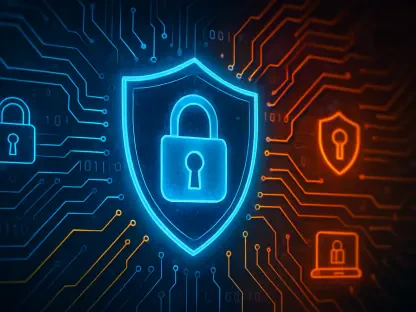In today’s interconnected digital world, cyber threats are emerging as a formidable challenge for businesses, especially with endpoint security being a critical concern. The ability of cybercriminals to adapt and innovate faster than defenses highlights a dramatic shift in the cybersecurity landscape. This roundup aims to distill insights from various industry leaders and sources, examining how businesses can prepare themselves against increasingly sophisticated cyber threats. As organizations delve deeper into the realm of cybersecurity, understanding varied opinions and strategic recommendations becomes crucial.
Cyber Threat Landscape: The Growing Challenges
The complexity of today’s cyber threat landscape is undeniable, with malware and ransomware on the rise. Researchers have observed a surge in malware campaigns utilizing cracked software versions to disseminate information stealers like Lumma and ACR Stealer. ASEC notes a significant uptick in ACR Stealer’s distribution starting in January 2025. Some experts emphasize the need for continuous validation to detect ransomware early, given its ability to infiltrate systems stealthily, hinting at a strategic shift toward more proactive defenses. Furthermore, vulnerabilities in critical systems such as SonicWall and Palo Alto Networks remind organizations of the persistent risks and the importance of regular updates and vigilance.
The Role of Advanced Technologies in Strengthening Defenses
As threats become more sophisticated, automation and AI are redefining traditional security protocols. Industry leaders recognize the transformative potential of AI-driven analytics, as illustrated by platforms like Tines, which streamline operations. These advancements allow organizations to reduce manual effort while enhancing efficiency. The debate around AI in cybersecurity includes recognizing its potential risks and opportunities. While AI can offer improved detection capabilities, experts caution that reliance on technology must be complemented by human oversight to ensure comprehensive security measures.
Endpoint Protection: Navigating Emerging Trends
Endpoint protection remains a critical component of cybersecurity resilience. Innovations such as Microsoft’s Windows Resiliency Initiative, which includes tools like Quick Machine Recovery, underscore the evolution in safeguarding system integrity. Global regulation is also shaping how endpoint security is approached, with various regions implementing stricter cybersecurity laws. Perspectives vary on the effectiveness of these regulations, but there’s consensus that a balanced approach combining regulation and innovation is essential. Established practices are constantly questioned as new technologies emerge, pushing organizations to adapt continuously.
Business Strategy and Cybersecurity Integration
Beyond technical defenses, integrating cybersecurity within broader business strategy plays a pivotal role in achieving resilience. The State of GRC 2025 report identifies a shift in focus toward strategic business drivers like customer trust and data protection. Experts suggest that cybersecurity should not only be viewed as a risk mitigator but also as a catalyst for business continuity and growth. This integration poses challenges such as ensuring seamless alignment with governance, risk, and compliance (GRC) frameworks, but forward-thinking approaches promise greater security reliability.
Key Insights and Strategic Recommendations
The importance of thorough cybersecurity preparedness cannot be overstated. Practical tips include regular updates and patches, implementing AI and automation, and aligning security measures with business objectives. By examining industry best practices and strategic recommendations, organizations can lay a foundation for robust cyber defense. The key to success lies in employing a holistic approach that combines technology, strategy, and human insight.
Continuous Journey Toward Cybersecurity Readiness
Cybersecurity is not a one-time venture but a continuous journey toward adaptability and resilience. Organizations have increasingly recognized its role as an ongoing strategic necessity. As cyber threats persist, businesses are encouraged to embrace change and cultivate a proactive cybersecurity culture. By synthesizing expert insights and exploring strategic steps, organizations can enhance their cyber resilience—the ultimate goal in navigating this complex digital landscape. For further insights into evolving threats and strategic measures, continued research and engagement with cybersecurity discourse is recommended.









